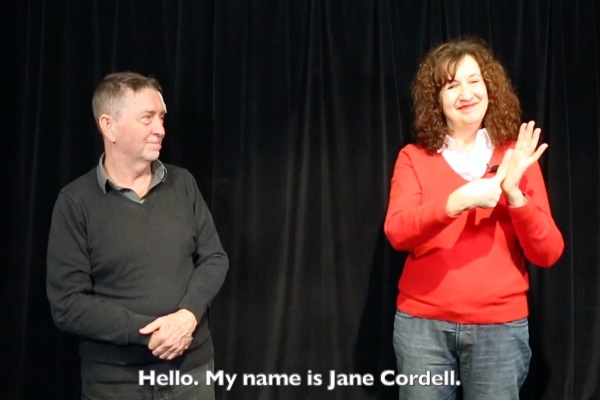
In Deaf Awareness Week 2023, Jane describes making a bi-lingual short film in English and British Sign Language (BSL). Meanwhile, Rob offers some handy tips for anyone thinking of making such a film of their own.
Jane
Result CIC is based in Salford. We were recently commissioned to carry out a project with our local health service - Salford Integrated Health Partnership. In late May it will bring together local D/deaf people who use health services with Salford health managers to learn from each other. We will discuss to improve access so that it is more equal.
I became deaf as a young adult and am happy to be working on this project with Richard Jones, a senior Deaf leader who uses BSL as his first language. Richard and I met when we both did work at Manchester Deaf Centre. The first part of the project was producing a short film with Result CIC’s Communications and Marketing associate, Rob Martin. The film explains the project and encourages local D/deaf people to send their ideas and sign up to join the live event.
It seemed obvious to me that for the film to be effective, it should be in both BSL and English at the same time. As we worked on the script, I realised that I had never seen a film which was in both original languages. Usually, there is someone speaking and an interpreter providing their version of what is said. Or alternatively, a person may sign and an interpreter voices over (interprets into spoken language). You may think there is no difference. But there is. Someone expressing themselves directly in their own language can choose the clearest way they know to do so. If you are taking another person’s words or signs and interpreting them, first you need to do this slightly later – processing what they say/sign. And second, you are providing a ‘second’ version of what they say, or sign. Put simply, when both people are communicating in their first language directly, there is no ‘interpretation’ involved.
Making the film was an interesting process which threw up some new ideas:
- It is definitely possible to produce a film in both languages. It requires some flexibility to do so.
- The length of a phrase or sentence in BSL may be quite different to the version in English. You therefore need a good rapport between the people speaking so they are aware of natural pauses and they don’t get out of sync.
- The film is visually interesting as we don’t expect 2 people to communicate at the same time. It lets you settle on one of the speakers and/or the captions (a must for an accessible film).
- There is scope for more material produced in this way and making it could lead to new innovations and greater inclusivity.
Interested in learning more about D/deaf awareness and communication including coaching by deaf people? Get in touch.
Rob
If you're thinking about making such a film yourself, here are some tips that will save you time.
1: It seems an obvious thing to say but when two languages are being used at the same time, they may not be in synch. In fact, they probably won't be. Whilst that's fine if the film is one long take, it can create issues in the editing.
Throughout the film, we had to cut between different sections to add captions, but this proved difficult in the editing as Jane and Richard would be at different points in the script.
So prepare in advance and have a system in place whereby you ensure that all participants wait for the correct stopping point.
2: This means making sure that the script/autocue etc has obvious and clear places where a break is needed so make sure this is evident to those in front of the camera.
3: I'm a hearing person but have some basic knowledge of BSL. However, I found that I naturally concentrated on Jane's spoken delivery whilst not paying as much attention to where Richard was in his BSL version. I'd recommend an interpreter in the room to support this and help keep both people in front of the camera on track.
4: Rehearse!
Hopefully, these small tips will make your film run smoothly.